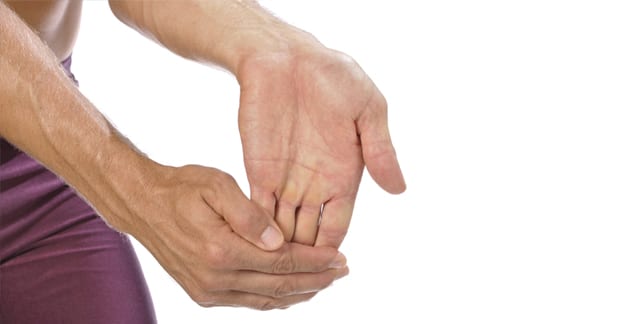In part one, we cited three primary goals of carpal tunnel syndrome (CTS) management that include the following: 1) physical management strategies; 2) chemical management strategies; and 3) self-management strategies. All three goals include a component that doctors of chiropractic control AND (most important) a component that you the patient controls. We will continue this discussion this month with chemical management strategies.
Chemical management strategies: Here, the job of your chiropractor includes guiding you in methods to reduce swelling or inflammation. The first method involves the use of ice. Different cooling approaches include the use of ice cup/massage (applied directly on the skin until numb, which takes about five minutes) and/or ice packs (takes about 10-15 minutes). Your doctor can also offer assistance in choosing various anti-inflammatory herbs (such as ginger, tumeric, boswellia) and vitamins (such as vitamin B6 or pyridoxine; magnesium, fish oil / omega 3 fatty acids, vitamin D) with anti-inflammatory properties. Recently, probiotics have also been demonstrated to reduce inflammation! YOUR JOB is to follow these recommendations that you and and your chiropractor agree upon to help reduce the inflammatory effects of CTS. Other “chemical strategies” may include adding the primary care physician to “the team,” as prescriptions for various conditions such as diabetes, hypothyroidism, rheumatoid arthritis, and others may be appropriate in certain CTS cases.
Self-management strategies: Though we have already looked at the job of your chiropractor and “YOUR JOB” as it pertains to 1) physical management and 2) chemical management strategies, overlap exists between all three CTS management goals. In other words, as the name implies, “self-management strategies” includes the need for you to comply with the recommendations your doctor makes. For example, wearing the cock-up wrist splint primarily at night (when sleeping and less commonly at times during the day), following instructions regarding job modifications, nutritional strategies, and (when applicable) pharmaceutical intervention are things you can do to alleviate symptoms. One of the MOST IMPORTANT self-help strategies is the training of carpal tunnel specific exercises, as well as exercise in general. Maintaining a proper weight (a BMI between 20-25) is also a goal that will help manage CTS, as obesity is a risk factor for this condition and a host of other conditions, including diabetes!
EXERCISE #1: Stand near a wall. Place your palm on the wall at shoulder height pointing the fingers down towards the floor, keeping the elbow straight. Reach across with the opposite hand and pull your thumb back as you stretch the palm-side forearm muscles. Hold 5-10 seconds until you feel the muscle “melt.” Repeat three times per side, five times a day. You can use the edge of a counter top rather than a wall, if you like.
EXERCISE #2: Bend the elbow 90 degrees. “Dig” your thumb DEEP into the palm-side forearm muscles close to the elbow. Slowly straighten the elbow and maintain the deep pressure into the muscle until the elbow is completely straight. REPEAT this multiple times moving your thumb one inch closer to your wrist from the last pressure point until you are one to two inches from the wrist (or, until you don’t feel much tenderness). You can vary the speed at which you straighten the elbow but generally, slower is better than fast movement, and the deeper the pressure, the better.
Repeat these two exercises on BOTH sides so you can feel the difference between the two, regardless if you have problems on both sides. Since the neck and shoulder can be involved, your doctor of chiropractic will also show you how to stretch these areas, as keeping the whole “kinetic chain” stretched is very important for long-term benefits.




